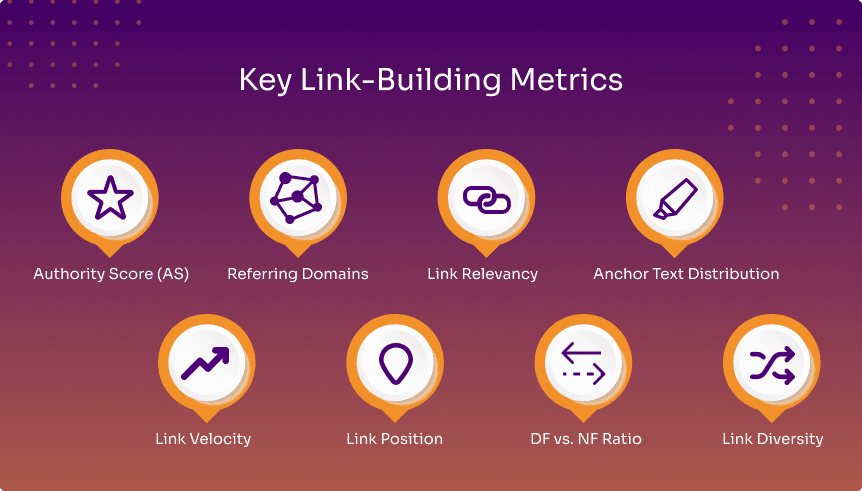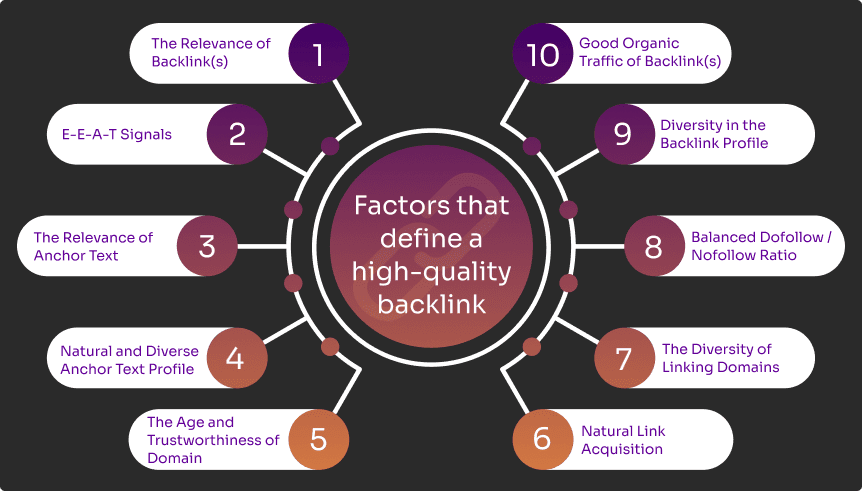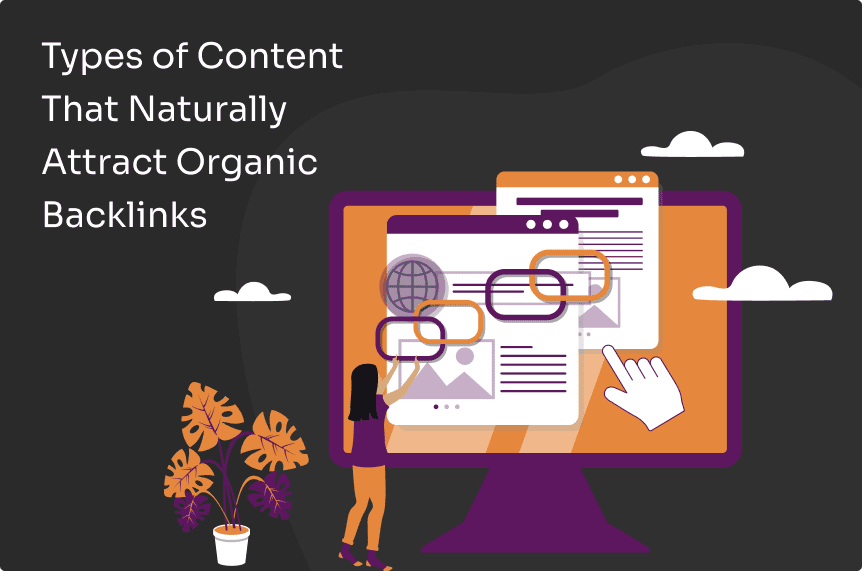When I decided to commit to writing a comprehensive article on link building, I knew my knowledge in this field was my greatest asset. After all, I’ve spent the past 10 years working directly in off-site SEO, with a focus on link building strategies. At the same time, I was well aware that the landscape had changed significantly since 2015, when I began my career at a Novi Sad-based company that was then considered a leader in the regional industry.
It’s been fascinating to observe how the landscape evolved—how algorithms shifted, digital marketing strategies grew more complex, and clients began to demand a higher level of relevance and consistent success. Through it all, link building has remained remarkably resilient.
Now that AI has become an integral part of our reality—woven into nearly every facet of business and life—transformation within the link building sector is inevitable. No, it’s not dead in 2025. But only those who know how to adapt, and who place user intent, a distinct brand identity, and authority at the center of their efforts, will see meaningful results. That’s what truly separates AI-generated outputs from expert insight.
And for those who get it right, link building remains one of the strongest and most reliable ranking signals today—capable of driving organic traffic, elevating search visibility, and reinforcing online credibility.
Table of Contents
What Are Backlinks and What Makes a Link Building Campaign Effective

A backlink is simply one website linking to another. But under the surface, a lot more is going on. Each backlink serves as a signal to search engines, indicating that your content is trustworthy, valuable, and worth referencing.
A backlink profile encompasses all the links pointing to a domain, shaping how search engines perceive a website’s authority and relevance. It’s a reflection of your site’s digital reputation. A diverse, healthy backlink profile is about strategic quality, diversity, and natural acquisition.
The effectiveness of a link building campaign depends not only on outcomes like rankings and traffic, but also on the quality of relationships built and the long-term authority it fosters. But most importantly, backlinks must align with your brand’s authority, message, and overall SEO goals to create sustainable impact.
Effective link building involves:
- strategic link prospecting – identifying high-value opportunities
- authentic communication – crafting personalized outreach pitches that actually connect
- continuous refinement – delivering content that earns its place on authoritative websites
The Main Benefits of Link Building
Despite the ever-evolving digital landscape, backlinks continue to serve as key indicators of authority, relevance, and trust in the eyes of search engines. According to research by Adam Connell, a staggering 94.39% of online content receives zero backlinks—highlighting just how essential they are for visibility and SERP dominance.
Backlinks are a critical component of every effective SEO. They elevate domain authority, boost rankings, and increase the flow of organic traffic. Beyond that, they signal credibility to search engines, reinforcing the legitimacy of your content. High-quality backlinks also drive referral traffic, enhance crawlability, and contribute to long-term SEO growth through compounding value over time.
Simply put, they’re one of the few SEO elements that continue to deliver both immediate and sustained impact.
Key Link Building Metrics to Watch

To build a solid backlink profile, pay attention to key metrics that indicate link value and SEO impact. Understanding and monitoring these metrics is essential for crafting a sustainable, performance-driven link building strategy.
The below-listed indicators help separate valuable, high-authority links from those that offer little to no benefit:
Domain Authority (DA) – Developed by Moz, Domain Authority scores predict how well a site will rank on search engines. While not a Google metric, it’s widely used in link prospecting.
Page Authority (PA) – Also from Moz, PA measures the ranking strength of a single page. It’s essential when targeting blog posts or internal pages for link acquisition.
Authority Score (AS) – is Semrush’s proprietary metric that evaluates the overall quality and SEO strength of a domain. It takes into account factors such as backlink profile, organic search traffic, and spam indicators to provide a more comprehensive picture of a domain’s value.
At Ginger IT, we primarily rely on Authority Score (AS) as our go-to metric. It’s particularly useful when prioritizing outreach targets and assessing the true value of potential link opportunities, offering a more comprehensive view than surface-level indicators alone.
Domain Rating (DR) – Ahrefs’ Domain Rating measures the strength of a website’s backlink profile on a scale from 0 to 100. It’s based on the quantity and quality of referring domains and is frequently used to assess the link equity a website can pass.
Referring Domains – It’s not just how many links you have, but how many unique domains are linking to you.
Link Relevancy – Topical relevance is critical. A backlink from a domain in the same industry or niche provides stronger contextual value.
Anchor Text Distribution – Anchor text diversity impacts rankings and penalties. While over-optimization is a red flag, natural variations improve authenticity and performance.
Link Velocity – The pace at which backlinks are acquired matters. A sudden spike can look suspicious, while steady growth mirrors organic popularity.
Link Position – is the placement of a backlink within a webpage’s content. Links embedded within body content—especially near the top—carry more weight.
Dofollow vs. Nofollow Links Ratio – Dofollow links pass authority, while nofollow links don’t. A natural backlink profile includes both. Google now considers nofollow links as hints, not directives, adding nuance.
Link Diversity – A profile dominated by one type of link looks unnatural. Varying link types, anchor texts, and domains build trust and authority.
The 4 Main Types of Backlinks
Not all backlinks are created equal—and understanding the differences between them is essential for building a balanced, effective backlink profile. A well-rounded approach starts with knowing what each link type brings to the table.
Dofollow Backlinks – These links pass SEO authority and are often referred to as “link juice.” They’re the gold standard in most link building campaigns because they directly impact rankings when acquired from high-quality, relevant sources.
Nofollow Backlinks – Marked with a rel=\”nofollow\” attribute, these links don’t pass “link juice” in the traditional sense, but that doesn’t mean they’re useless. In fact, nofollow links—like those from social media platforms, YouTube descriptions, or blog comment sections—can drive significant referral traffic and boost brand visibility.
Sponsored Backlinks – Clearly labeled with the rel=\”sponsored\” tag, these links indicate paid promotions. They’re necessary for compliance with Google’s guidelines, and while they can drive traffic, overusing them—or using them without proper disclosure—can lead to ranking penalties.
UGC (User-Generated Content) Backlinks – These links come from user-generated content such as forums, comment sections, or community platforms. While they carry less authority, they contribute to link diversity and can support brand exposure in niche communities. Their value lies in natural engagement and visibility rather than direct SEO impact.
As you can see, each type serves a specific purpose in SEO, and knowing how to leverage them strategically can make or break your link building efforts.
Every digital marketer aims for high-quality, authoritative dofollow links—but would you really turn down a link from Entrepreneur just because it’s marked nofollow? Of course not.
The debate over whether nofollow links influence rankings is a long-standing one in the SEO world, and while opinions vary, one thing is clear: a strong nofollow link from a reputable source can still offer real value. At the very least, it amplifies brand visibility and drives organic traffic—both of which are always worth pursuing.
Best Link Building Strategies

Today, it’s widely recognized that successful link building hinges on a mix of creativity, strategic insight, and careful execution.
Gone are the days when bulk outreach and generic guest posts delivered meaningful results. Today’s landscape rewards relevance, authenticity, and value-driven tactics that align with user intent and brand authority. To stay competitive, link building must evolve into a disciplined, data-informed process rooted in quality over quantity.
Digital PR
Digital PR is one of the most impactful strategies for building authority, credibility, and visibility in today’s digital landscape. Unlike traditional link building, which focuses solely on acquiring backlinks, Digital PR takes a more holistic approach—combining media outreach, storytelling, and brand positioning to drive measurable SEO performance. It leverages strategic content to secure high-authority backlinks, media coverage, and brand mentions that resonate across digital channels.
This approach enhances a brand’s reputation, drives organic traffic, boosts keyword rankings, and increases branded search—clear indicators of ROI in the SEO world. According to Semrush, Digital PR is particularly effective for earning coverage in top-tier publications by proactively pitching relevant stories to targeted journalists. Rather than waiting to be discovered, brands position themselves at the center of the narrative.
Some of the key advantages of digital PR include:
- boosts brand visibility and trust
- drives targeted traffic
- builds relationships with journalists
- adds strong social proof
- spreads your content to a wider audience
When executed correctly, Digital PR not only earns authoritative backlinks but also elevates the entire perception of a brand in the marketplace. In my opinion, PR link building is undoubtedly the future of link building.
HARO (Connectively) and Alternatives
HARO—formerly known as Help a Reporter Out and now rebranded as Connectively—has long been a staple in Digital PR and link building campaigns. It allows experts to respond to journalist queries and be quoted in high-authority publications, earning credible editorial backlinks that significantly enhance domain authority and brand trust.
However, with HARO’s recent changes, its rebranding into Connectively, and increasing competition, several high-performing alternatives have emerged—offering similar, and in some cases, superior results. As HARO evolves under its new identity, these alternatives provide valuable options for diversifying your digital PR strategy without compromising on quality or authority.
Below are five outstanding HARO alternatives:
ProfNet – Often regarded as the go-to platform for high-quality wins, offering access to reputable journalists from established media outlets. It’s widely used by PR professionals aiming to secure placements in mainstream media, making it ideal for brands seeking visibility in top-tier publications.
Source of Sources (SoS) – Has positioned itself as a user-friendly alternative for those already familiar with HARO’s format. It provides curated media requests directly in your inbox and focuses on relevance, making it easier to spot viable opportunities.
Featured – Stands out with one of the best conversion rates and fastest response cycles, making it ideal for time-sensitive campaigns. The platform uses a contributor-first model, ensuring your profile is matched with relevant queries based on expertise. It’s an excellent tool for consistently landing placements in niche and mid-tier publications with strong SEO value.
Help a B2B Writer – Tailored specifically for B2B niches, making it a perfect fit for those in marketing, SaaS, and tech sectors. It connects expert sources with professional content marketers writing for high-quality industry blogs and publications. The requests are highly targeted, which means less noise and a better match between your expertise and the content being created.
Qwoted – Earns praise for its high editorial standards and a robust reputation among journalists. It features a built-in messaging system that streamlines communication and enhances transparency between sources and reporters. The platform also allows you to build a professional profile, increasing your chances of being contacted directly by journalists for future opportunities.
These platforms follow the same principle as HARO: deliver timely, expert insights in exchange for coverage and backlinks. The key to success lies in speed, precision, and relevance—responding to the right queries with well-crafted answers that fit the journalist’s narrative.
Reactive PR Content (Newsjacking)
Timing is everything. Capitalize on breaking news by creating content that aligns with trending topics.
This tactic can attract attention from journalists and publishers who are actively seeking fresh angles, making your content more likely to earn backlinks. When done strategically, newsjacking positions your brand as agile, relevant, and plugged into real-time industry conversations.
It’s also an opportunity to demonstrate thought leadership by offering expert commentary or unique perspectives on current events. Just be sure the content aligns authentically with your brand—opportunism without relevance can backfire.
The Moving Man Method
The Moving Man Method, originally developed by SEO expert Brian Dean, is a strategic link building technique similar to the broken link building approach. Brian introduced this method as a way to earn high-quality backlinks by providing value through updated, relevant resources.
This method focuses on identifying outdated content, defunct tools, or rebranded services that still have active backlinks pointing to them. You then create or update a superior version of the content and reach out to the referring domains, offering your resource as a relevant, up-to-date alternative. It’s a win-win: you earn a valuable backlink, and the linking site improves its user experience by replacing broken or outdated links.
But, the success hinges on quality—your replacement content needs to be better, more current, and clearly more valuable than the original.
Guest Blogging
Guest blogging has been one of the most widely used link building methods in nearly every company I’ve worked with—and for good reason. Even in 2025, it remains highly effective when executed properly.
The most valuable advice for guest blogging success is to target blogs where your content delivers real value to their audience. Focus on topics that address content gaps, introduce fresh perspectives, or offer actionable insights that readers genuinely need. Equally important is aligning your content with the publication’s tone, audience expectations, and editorial standards. The key lies in focusing on reputable, high-authority, relevant websites with genuine editorial standards.
In today’s landscape, authenticity matters far more than overt self-promotion—substance earns trust. Reaching out with a personalized pitch that highlights the usefulness of your content increases your chances of being featured. A well-crafted, well-placed guest post not only earns a quality backlink but also strengthens brand awareness and positions you as a credible voice in your niche.
Editorial Backlinks
Earned through content worth citing—research, insights, or thought leadership. These backlinks are typically given naturally by journalists, bloggers, or publishers referencing your work. They are some of the most valuable links you can earn because they’re based on merit, not solicitation, and carry strong authority signals.
Creating content that drives editorial links often means investing in original research, expert analysis, or deeply insightful commentary. The payoff? Backlinks that build trust, improve rankings, and enhance your brand’s credibility in the long run.
Local Link Building Strategies
Local link building is the practice of acquiring relevant backlinks from local websites with the goal of driving geographically targeted traffic and improving your visibility in local search results. These links not only strengthen your local SEO performance but also enhance your business’s credibility and trust within the community.
If your business serves a specific region, this should be a foundational element of your SEO strategy. Begin by claiming and fully optimizing listings on local business directories. Consistency is critical, so ensure your NAP (Name, Address, Phone number) information is identical across all platforms.
Profiles on platforms like Google Business Profile, Yelp, and industry-specific directories can generate qualified traffic and improve your local rankings. Beyond directories, aim to earn backlinks through local press coverage, sponsorships, event participation, and community partnerships.
These high-authority local links build visibility, foster trust, and help establish your business as a recognized presence in your area.
Backlinks from Competitor Link Analysis
Competitor link analysis allows you to uncover gaps and opportunities where you can earn similar—or even superior—backlinks. By identifying broken links, outdated resources, or untapped outreach prospects that your content can replace or improve upon, you position yourself to capture high-value link placements. Tools like Ahrefs and SEMrush are essential for uncovering these backlink patterns and guiding data-informed decisions.
This approach gives you a strategic advantage by highlighting what’s already working within your niche. If a site is linking to a competitor, there’s a strong likelihood they’ll link to your version—especially if it’s more current, comprehensive, or useful.
Beyond link acquisition, competitor analysis also offers powerful insights for shaping your content strategy. By observing which topics and formats earn the most links, you can identify proven content types and replicate that success in a way that aligns with your brand.
In my experience, competitor link analysis is the cornerstone of any serious and professional link building campaign. It should be complemented by thorough market analysis, with a focus on targeting competitors who are slightly ahead of you—not those backed by massive budgets and well-established brands that are out of reach.
Link Building Strategies Focused on Authority

In addition to earning valuable backlinks, some link building strategies are designed primarily to strengthen authority signals—helping to build credibility, enhance reputation, and showcase your expertise to the right audience while expanding your professional network.
These links are particularly powerful for off-site SEO when they originate from niche-relevant websites, are tied to trusted organizations, or are shared within highly targeted and engaged communities.
Participating in Podcasts and Interviews – Get featured and linked as a guest expert to earn backlinks and build personal brand authority. These appearances often include show notes, episode summaries, or promotional blog posts that link back to your website or social profiles.
Webinar Backlinks – Hosting or participating in webinars offers an excellent opportunity to earn backlinks. You can repurpose webinar materials into blog posts, presentation decks, or downloadable resources, and gain links from attendees, co-hosts, industry partners, and event coverage across relevant websites.
Acknowledgment Backlinks – Get cited as a sponsor, supporter, or contributor. The bonus is that these often come from .edu, .org, and non-profit sites, which are typically viewed as highly authoritative by search engines. Engaging in community initiatives, scholarships, or industry events can increase your chances of earning these valuable citations.
Resource Page Link Building – Get listed on curated resource pages by offering helpful tools, guides, or research. These pages are designed to provide valuable references to readers, making them ideal spots for high-quality backlinks. To succeed, your content must genuinely add value and be relevant to the topic of the resource page—think comprehensive guides, industry studies, or unique tools that fill a clear need.
Testimonial Link Building – This means offering testimonials in exchange for a link. These links are often placed on high-authority domains, such as product or service provider websites, and are typically located on testimonial or case study pages—making them both visible and valuable. It’s a win-win: you gain a credible backlink while giving the company authentic social proof to support their brand.
Visual Content for Link Building

Backlinks aren’t confined to text—they can also be earned through visual elements embedded in web pages. When crafted strategically, visual content serves as a scalable and effective asset in organic link building.
The great thing about visual assets is their high shareability. They’re more likely to be reposted or embedded across various platforms, often with a backlink crediting the original source.
Infographic Links – Infographics simplify complex ideas, making information more digestible and engaging for readers. They’re also link magnets when distributed with proper embed codes. Because of their visual appeal and shareability, they’re frequently cited by bloggers, journalists, and educators looking to enhance their own content.
Image Backlinks – Image link building is a very powerful link building tactic. Use branded images and request credit when they’re used without attribution. Namely, people will sometimes use your images on their websites without giving proper credit. You can identify these uncredited uses of your visuals across the web by performing a reverse image search on Google or using TinEye.
Badge Backlinks – Create certification or awards badges for industry peers. They’ll proudly display—and link back. This tactic not only builds backlinks but also strengthens relationships within your niche and elevates your brand’s authority by positioning it as a recognized leader or evaluator in the field.
Footer Links – Footer links are hyperlinks placed at the bottom section of a website, often used for navigation, legal disclaimers, or linking to important internal pages. While they can contribute to SEO when used sparingly and naturally, overusing keyword-rich or external footer links can appear manipulative to search engines and diminish their value.
Link Building Strategies Without Content
Not all backlinks require new content creation. Some of the most effective link building tactics involve identifying existing opportunities and leveraging them to your advantage. These strategies are especially useful for maximizing results with minimal content investment.
Niche Edits – Niche edits, or link insertions, involve placing links into existing content, ideally where they add relevance or enhance the user experience. They’re more effective when integrated naturally within the context of the topic. Outreach for niche edits often yields higher success rates because the content already exists and requires only minimal adjustments. However, it’s crucial that these edits are made naturally and authentically—this isn’t about paying for placements, but about offering genuine value to enhance existing content.
Unlinked Brand Mentions – Monitor and convert brand mentions into backlinks. This is often a low-effort, high-return tactic because the brand is already being referenced—it’s just missing the link. This tactic is especially effective for well-established brands. Tools like Ahrefs or Google Alerts can help you track unlinked mentions across the web and reclaim valuable link equity.
Broken Link Building Strategy – Find broken external links on relevant websites and offer your content as a replacement. Site owners are typically open to fixing broken links, especially when provided with a relevant, high-quality alternative.
Reclaim Lost Links – Links break or get removed over time due to site updates, page removals, or domain changes. Use tools like Ahrefs or Screaming Frog to identify lost backlinks and reach out to the site owners to reinstate or redirect them.
What Defines a Valuable and High-Quality Backlink
A valuable and high-quality backlink comes from a reputable, relevant website and is naturally integrated into meaningful content. It reflects authority, trustworthiness, and topical alignment, signaling to search engines that your site is credible.
These are the key factors that define a high-quality backlink and directly influence its impact on your overall SEO performance:

The Relevance of Backlink(s) – Backlinks from websites within your niche or industry carry more weight because they signal authority and contextual alignment. One high-quality backlink from a respected site can outweigh dozens of low-quality links. Search engines view these links as endorsements from credible sources, increasing your perceived expertise.
E-E-A-T Signals – Backlinks from websites that demonstrate strong Experience, Expertise, Authoritativeness, and Trustworthiness (E-E-A-T) enhance your own credibility. These signals are particularly important in sensitive niches like health, finance, and law, where authority is essential for ranking.
The Relevance of Anchor Text – Anchor text that accurately reflects the content of the linked page improves both usability and SEO.
Natural and Diverse Anchor Text Profile – Using a variety of anchor texts—branded, exact-match, partial-match, and generic—helps prevent over-optimization, and reflects organic link acquisition, which search engines reward.
The Age and Trustworthiness of Domain – Older domains with a consistent history of quality content are generally seen as more trustworthy and hold more.
Good Organic Traffic of Backlink(s) – A backlink from a page that attracts steady, real visitors is more valuable than one from a low-traffic or inactive page. It also increases the chance of referral traffic and real engagement with your site.
Diversity in the Backlink Profile – A well-rounded backlink profile includes a mix of domains, link types, and sources. This diversity signals to search engines that your links were acquired naturally rather than through manipulative tactics.
Balanced Dofollow / Nofollow Ratio – While dofollow links pass authority, nofollow links still provide traffic, visibility, and credibility. They’re also part of a natural backlink profile.
The Diversity of Linking Domains – Multiple links from a single source aren’t as valuable as links from a range of authoritative domains. A diverse set of referring domains indicates broader recognition and credibility across the web.
Natural Link Acquisition – Links earned organically through great content, media coverage, or mentions are the most sustainable. Search engines favor these because they reflect genuine authority and user value.
Types of Content That Naturally Attract Organic Backlinks

Creating content that attracts backlinks without the need for outreach is every SEO strategist’s dream-and it’s entirely achievable with the right approach. By crafting high-value content specifically designed to earn links, you can turn these assets into natural magnets for organic backlinks from industry blogs, media outlets, and educational platforms.
When executed with quality and clear intent, the following content formats consistently generate organic backlinks.

Market Research and Stats
Original data and statistics are backlink magnets because they provide unique value. Blogs, journalists, and industry analysts love referencing credible figures to support their own narratives.
Industry Predictions
Forward-looking content offers value to journalists, bloggers, and marketers looking for trend-based insights. When published at the right time, it can attract media mentions and inclusion in curated annual forecast pieces.
“Why” and “What” Posts
These formats answer specific questions and appeal to search intent, making them highly shareable and referenceable. Their clarity and directness help other content creators link to them when supporting their own arguments or explanations.
Ultimate Guides
Deep-dive, all-in-one resources become authoritative hubs for a specific topic. Because of their depth, other websites frequently link to them as a reliable source.
Expert Insights
Featuring expert commentary or interviews boosts credibility and often encourages the featured individuals to share and link to the content. It also builds trust with your audience and positions your brand as a thought leader.
Success Stories
Real-world success stories resonate with readers and provide social proof. They often get referenced in blogs, webinars, and industry roundups highlighting best practices.
Whitepapers and Case Studies
These in-depth, research-backed documents are often cited in academic, B2B, and technical contexts. They offer authoritative information that supports arguments and decision-making, making them link-worthy assets.
Skyscraper Content
Invented by Brian Dean, this link building method involves creating the most comprehensive, valuable version of existing high-ranking content. When done right, it becomes the go-to reference in your niche, earning backlinks from those who previously linked to outdated or less complete resources. This approach proved highly effective in early 2025—and it continues to deliver results, but only when paired with genuine value for your readers and a strategic, well-executed plan.
At our company, we recently tested the Skyscraper technique with success, securing backlinks from authoritative websites.
Infographics and Videos
Visual content simplifies complex ideas and increases shareability. When embedded by other websites, they naturally include attribution links—especially if you provide an easy-to-use embed code. These formats also tend to perform well on social media, expanding your reach and boosting the chances of earning organic backlinks.
Calculators and Quizzes
Interactive tools add practical value and drive user engagement, which boosts time on site and shares. They’re often linked to as resources in blog posts and guides that recommend useful tools or engaging experiences.
These most linkable content types provide value, credibility, or utility that other websites naturally want to reference.
What Google Really Wants
Google has long made it clear: not all backlinks are created equal. The search engine favors links from authoritative, relevant, and trustworthy sources-those that align with its quality guidelines and reflect genuine editorial intent.
In 2025, it’s no longer about sheer quantity; it’s about context, placement, and purpose. The most valuable links are those that enhance the user experience and signal real-world credibility, remaining one of the most powerful ranking factors in Google’s ever-evolving algorithm.
Conversely, Google penalizes unnatural, manipulative, and irrelevant links-especially when there’s an obvious attempt to game the system rather than provide meaningful value to users. This has been reinforced by recent updates, which specifically target spammy, low-quality, AI-generated content.
While the exact workings of Google’s algorithms remain under wraps, the company hasn’t really discouraged SEO professionals from engaging in link building. But what’s certain is this: the true power of link building lies in how well it supports a broader, well-rounded SEO strategy rooted in quality, relevance, and user value.
How Quickly Can You Expect Results from Link Building?

Link building results are rarely instant. Expect traction in 3–6 months, depending on domain age, authority, and competition. In highly competitive industries, it may take even longer to see measurable improvements in rankings and traffic. However, the long-term benefits of authoritative backlinks compound over time, making link building a sustainable investment rather than a quick fix.
Link building costs vary depending on quality and strategy. Factors influencing the price include the authority of the referring domain, the type of content required, outreach complexity, and editorial standards. While budget-friendly services may be tempting, they often rely on shady tactics or spammy placements that can do more harm than good.
That said, not all backlinks require a budget-exceptional content, digital PR, and organic mentions can still earn free, high-quality links. When your content provides real value or generates industry interest, natural link acquisition tends to follow.
Conclusion
If you’re looking for a clear-cut, definitive answer to the question, “How much influence do backlinks carry in 2025?” — I’m afraid there isn’t one. But here’s what we do know: most digital marketers agree that, even in a landscape shaped by ever-evolving Google algorithms and increasing digital noise, link building remains a cornerstone of any strong SEO strategy. Why? Because few tactics shape your site’s visibility, authority, and traffic quite like strategic, high-quality backlinks.
That said, don’t fall for the idea that link building is just a few clicks away or can be handled with cookie-cutter outreach. In today’s competitive digital environment, it’s not just about getting links — it’s about earning the right links, the right way.
For a long-term, future-proof SEO strategy, it pays to work with link building experts who understand that quality always beats quantity. At Ginger IT Solutions, we offer tailored link building services as part of a broader SEO strategy-crafted to elevate your authority, drive organic traffic, and deliver real, measurable results.
Backlinks aren’t going anywhere—and neither should your ambitions for digital growth.
